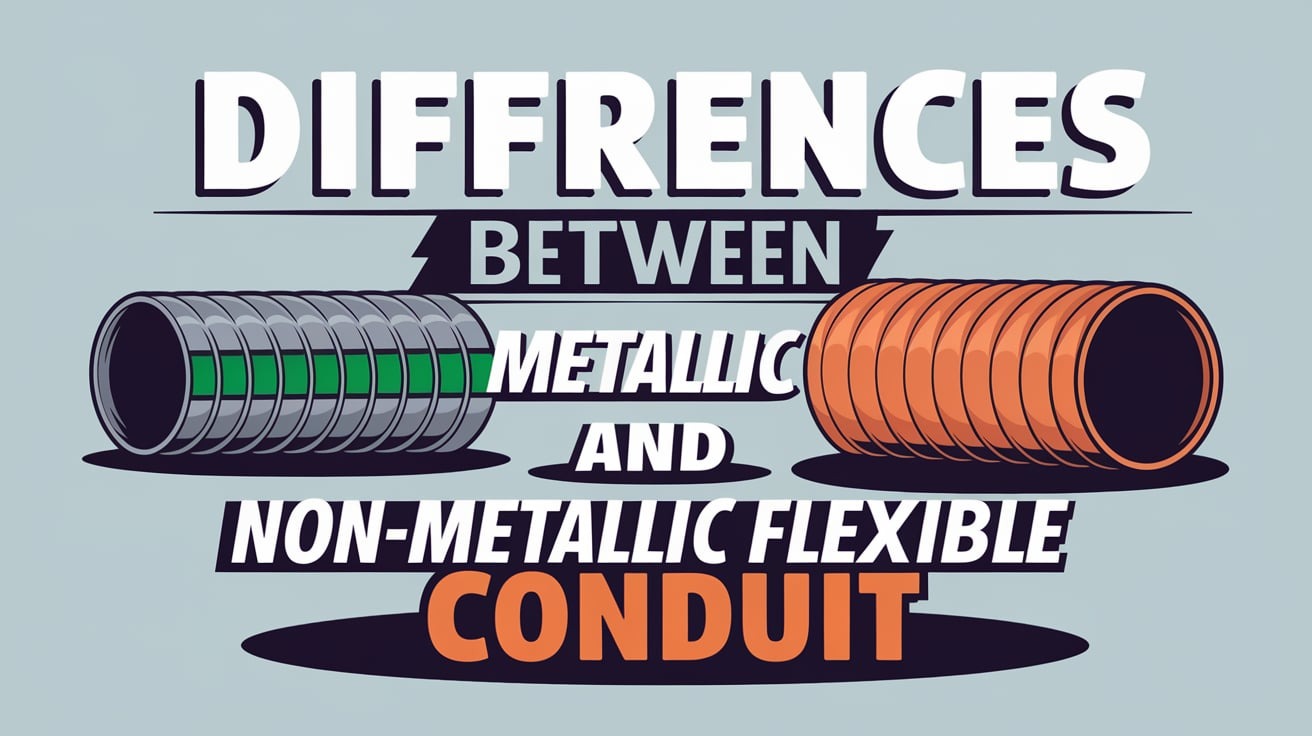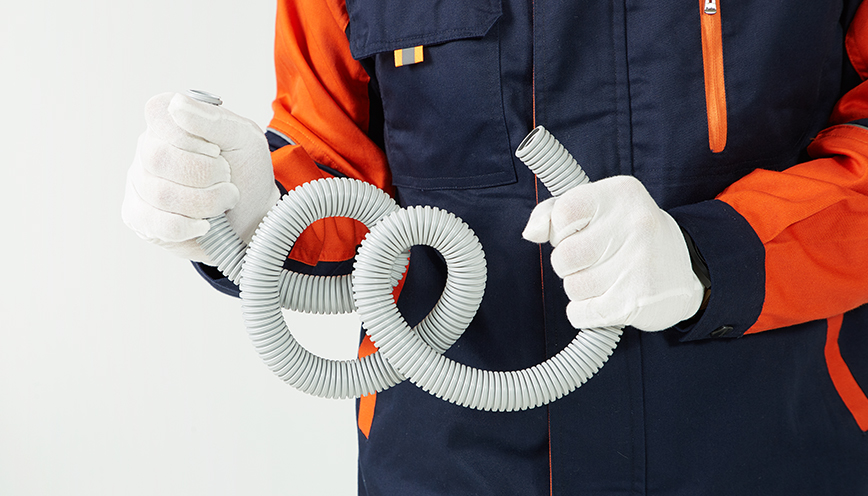A fiação elétrica requer proteção contra danos físicos, umidade, poeira e outros perigos. O conduíte flexível é uma excelente solução para essas necessidades, pois permite que os cabos dobrem e torçam enquanto permanecem protegidos. No entanto, há dois tipos de conduíte flexível disponíveis: metálico e não metálico. Nesta publicação, exploraremos as principais diferenças entre eles para ajudar você a escolher a opção certa para sua aplicação.
Eletroduto Metálico Flexível
O conduíte flexível metálico é feito de aço ou alumínio, revestido com uma camada protetora que resiste à corrosão e à abrasão. É altamente durável e pode suportar altas temperaturas e condições climáticas extremas. Também é adequado para ambientes onde a interferência eletromagnética (EMI) é uma preocupação. No entanto, é mais pesado do que o conduíte não metálico e pode ser mais difícil de instalar em espaços apertados.
Eletroduto flexível não metálico
O conduíte flexível não metálico é feito de materiais plásticos ou de nylon que são leves e fáceis de trabalhar. É ideal para aplicações residenciais e comerciais onde a flexibilidade é importante, mas a proteção EMI não é necessária. O conduíte não metálico é mais barato do que o conduíte metálico e é resistente à maioria dos produtos químicos e à radiação UV. No entanto, não é tão durável quanto o conduíte metálico e pode se tornar quebradiço com o tempo.
Principais diferenças entre conduítes flexíveis metálicos e não metálicos
- Propriedades físicas: o conduíte metálico é mais pesado e mais forte do que o não metálico, que é mais leve e flexível.
- Propriedades elétricas: conduítes metálicos oferecem melhor blindagem contra EMI do que conduítes não metálicos.
- Custo e disponibilidade: conduítes metálicos são mais caros que os não metálicos, mas estão amplamente disponíveis em vários tamanhos e formatos.
Escolhendo o Conduíte Flexível Certo para Sua Aplicação Ao selecionar entre conduíte metálico e não metálico, considere as necessidades específicas da sua instalação, como o ambiente, os tipos de cabos que você está usando e seu orçamento. Também é importante seguir as diretrizes de instalação adequadas para garantir que o conduíte forneça proteção adequada e não comprometa a integridade da fiação.
Concluindo, o conduíte flexível é um componente essencial em instalações elétricas, oferecendo proteção contra vários perigos. Ao entender as diferenças entre conduítes metálicos e não metálicos, você pode tomar uma decisão informada sobre qual tipo atenderá melhor às suas necessidades. Se não tiver certeza de qual opção escolher, consulte um eletricista qualificado ou um fabricante de conduítes para obter aconselhamento especializado.











